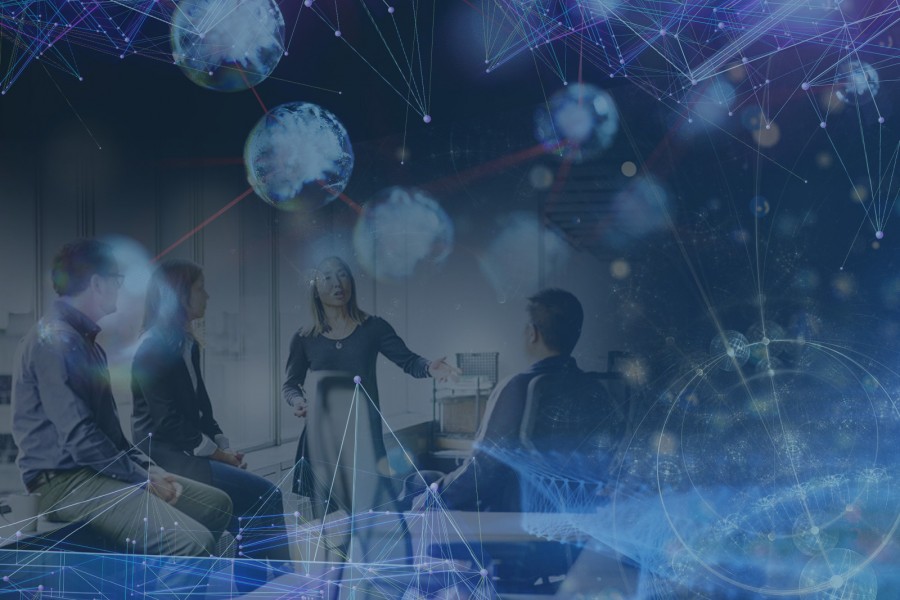
To keep up with the latest technology developments, enterprises have to be highly agile to stay ahead of the competition. This means that businesses need to position themselves to be the first to take advantage of the “next big thing.”
When it comes to software development, technology and business leaders need to keep their finger on the pulse to better understand the latest trends and how it can transform their organization.
We at Digi117 stay abreast of what’s going on in the industry and have put together a list of the latest trends in software development to keep you up to date.
1. AI Will Build Software
Artificial Intelligence (AI) has been going through a period of significant acceleration. Pretty soon, software will be developing software by leveraging machine learning (ML) and deep learning.
So what’s going to happen to software engineers?
Don’t worry, they’re not going to be out of a job any time soon. In this scenario, software developers won’t be spending time coding rules on how the technology is supposed to make decisions and take action. Instead, programmers will curate and prepare domain-specific data to feed learning algorithms which will be trained iteratively and improved continuously.
Pete Warden, author, and engineer at Google stated that "there will be a long ramp-up as knowledge diffuses through the developer community, but in ten years I predict most software jobs won’t involve programming.”
ML models can already figure out what features and patterns are important by engaging in data analytics, and it’s able to do this without any human intervention. As a result, the outputs of these ML models have the potential to bring new perspectives (to software development), and open doors that we didn’t know existed.
At the same time, programming languages will also become highly user-friendly. There are already low-code development options for building websites and mobile apps, and soon we will also have no-code solutions.
This means that developing a proof-of-concept will be less resource intensive and affordable while empowering non-technical staff.
2. It’ll Be About Containerization
Docker and Kubernetes ecosystems have already had a tremendous impact across industries. Going forward, I think you’ll see this trend expanding to the point where it will be quite rare to see teams not using containers.
As containers continue to evolve, experts predict Unikernels to take the Docker concept to the next level. This is because this approach strives to package a complete operating system into a self-executing, self-hosting container.
Unikernels will make applications more secure, agile, and much easier to deploy. It truly has the potential to revolutionize the microservices ecosystem. There has been a lot of work going on behind the scenes to make this happen, so hopefully, we’ll realize its promise in the new year.
3. The Blockchain Will Continue to Disrupt
The blockchain has been disrupting a variety of industries, and this trend is expected to continue. When it comes to software development, the blockchain will be used in tandem with AI, the Internet of Things (IoT), and fog computing.
For software developers, this will kick off an era if building innovative and disruptive solutions that leverage blockchain ledgers to enable smart contracts, micropayments, or fight fraud (and end counterfeiting in the supply chain).
4. The Future Is Functional
Functional programming is nothing new, but it’s still relatively uncommon. However, as JavaScript’s limitations make it challenging to debug and maintain, programmers are now starting to adopt a more “functional” approach to software development.
Unlike most imperative programming languages, functional programming keeps it simple and just concentrates on feeding values into functions while collecting the output. This method eliminates the complexities associated with tracking the global state of a program.
Developers today are starting to see the benefits of using solutions like Elm and (Facebook's) ReasonML on the client side, so we will probably see functional programming adopted in other parts of the stack in the months to come.
5. Native Analytics
As the importance of data analytics grows exponentially, we will see a number of products with embedded business intelligence (BI) and analytics modules. This can be attributed to the demand to quickly drive more value from the data generated by these systems.
To achieve this, software developers will start to include natural language generation in both BI and analytics modules. These are expected to become a fundamental requirement in all software products sooner rather than later.
6. Data Processing Will Move to the Edge
How we process, manage, and store data is changing. To make this entire exercise more efficient, we’ll see a higher degree of computing moving to the edge. In fact, edge and fog computing will completely change how we process data.
We’re already seeing more computing taking place at the initial data capture which is eliminating a lot of the workload from the server side. For example, we can see this in action with IoT, but in the future, we can expect non-IoT related use cases as well.
Whether it’s software development or any other area of business, the future will demand continuous evolution. As a result, enterprises need to nurture a workplace culture where everyone learns while they produce.
This approach will be necessary to meet the demands of the fourth industrial revolution, and it’ll be critical to maintaining a competitive advantage.









